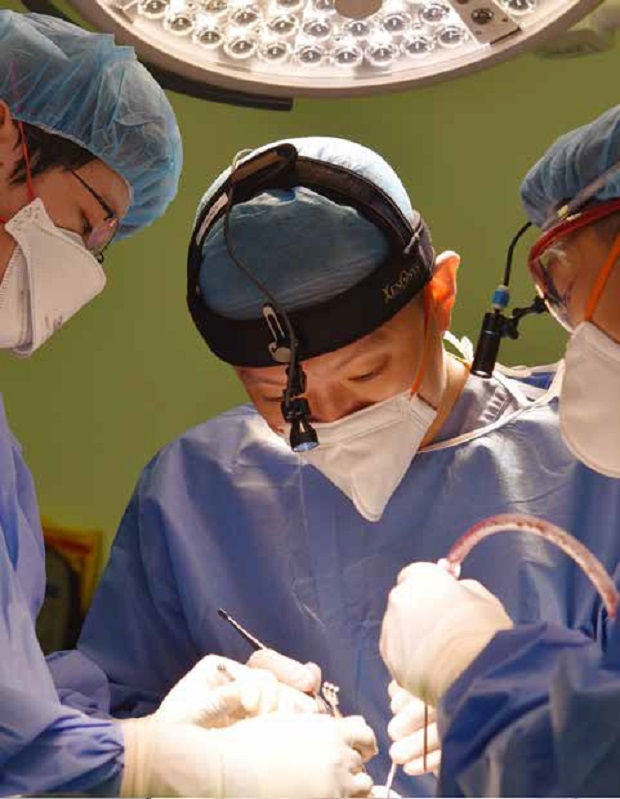
Dr Jonah Kua’s love of art underpins his work as a plastic surgeon, although he is quick to dispel the notion that his work is only about creating beauty.
A very obese young woman underwent bariatric surgery that resulted in massive weight loss. She was then left with unsightly folds of skin that resulted in recurrent bouts of infection, poor self-esteem and inability to exercise. She then had surgery to trim away the skin folds.
Did she undergo an aesthetics or an essential clinical procedure?
For Dr Jonah Kua, it is a misconception to think that plastic surgery is carried out for the sake of appearance only. It may be argued that undergoing such surgery merely improves “the form, but not function” of the patient, said Dr Kua, Consultant, Department of Plastic, Reconstructive and Aesthetic Surgery, Singapore General Hospital (SGH).
But for his patient, body contouring surgery boosted her confidence, and she started exercising and eating better. Another patient underwent a mastectomy, or a breast removal for cancer. “The reconstructed breast has no medical function. However, it has been proven to significantly improve the patient’s psychosocial and general well-being after cancer, so much so that it is now considered a medical indication,” he said.
The roots of modern plastic surgery began as reconstructive surgery, which progressed rapidly after World War I and II. At the time, there was a dramatic increase in facial and head injuries that led to horrific disfigurement in surviving soldiers.
“Many people think that it is all about the aesthetic procedures like Botox and fillers, but those make up just a very small part of the full spectrum of plastic surgery work,” he said, adding that the first successful renal transplant in the world was, in fact, performed by a plastic surgeon.
Dr Kua gets satisfaction from seeing his patients regain self-confidence and enjoy a better quality of life after treatment. “I find my work most fulfilling not just when the surgery is successful, but when it changes the patients’ lifestyle and they begin to live a more confident life,” he said.
Besides mastectomy and post-bariatric patients, he also sees victims of traumatic injuries with physical deformities and scarring, as well as those with more minor conditions like ptosis, or droopy eyelids.
Dr Kua describes plastic surgery as “dynamic”, requiring the practitioner to be nimble and inventive. “Plastic surgery is a very unique and specialised branch of surgery, where there are no anatomical boundaries or fixed techniques to carry out the surgery. We are taught to keep tissue alive and bring it from one area of the body to reconstruct deformities in another part of the body. But how we shape it such that patients get the best form and function really depends on each individual surgeon,” he said.
“Every surgery is different and no two deformities are the same. This means I have to analyse every patient’s pre-operative scans and come up with a surgical plan. It is challenging and that is what keeps me on my toes. There is no ‘typical’ day.”
Dr Kua was drawn to the discipline perhaps because of his love of art. As a child, he loved drawing and took part in numerous art competitions in school, although these days, he puts his artistic flair and keen eye for art into his work.
Formerly at Changi General Hospital, Dr Kua moved full-time to SGH when he assumed the role of Programme Director of the Singapore Integrated Programme for Plastic Surgery.
Dr Kua’s appreciation for beauty and passion for a healthy challenge extend to his hobbies. The father of two is an orchid enthusiast who looks after more than 200 of these blooms. Notoriously difficult to grow, the delicate beauties have blossomed under his meticulous care.
Get the latest updates about Singapore Health in your mailbox! Click here to subscribe.













 Get it on Google Play
Get it on Google Play